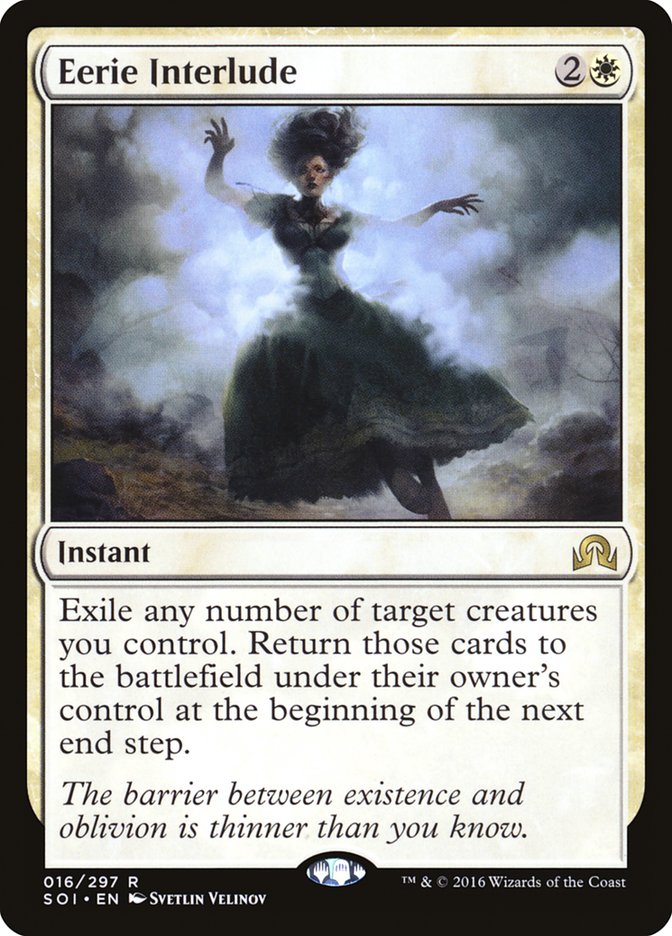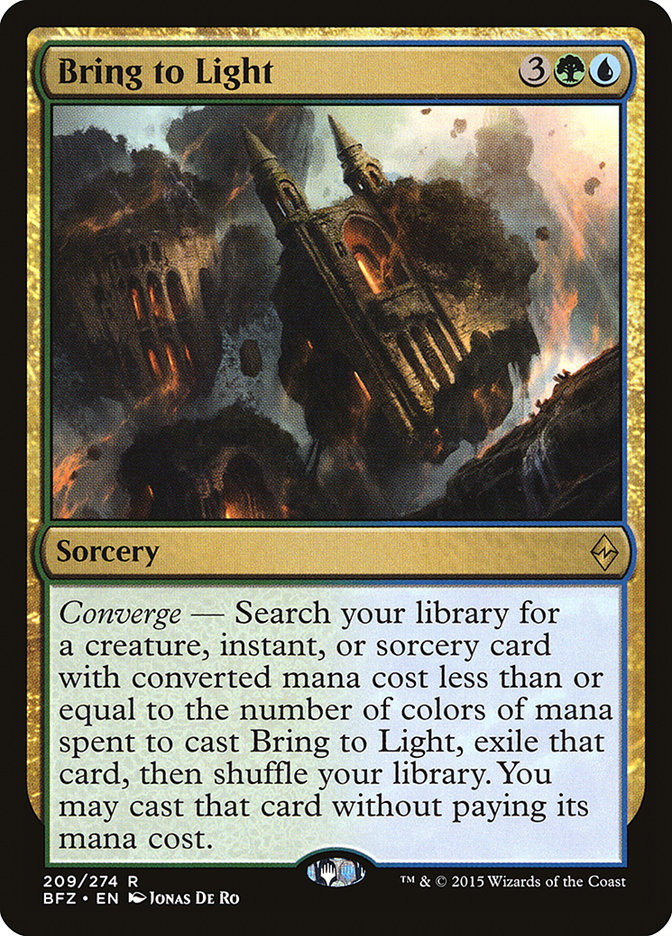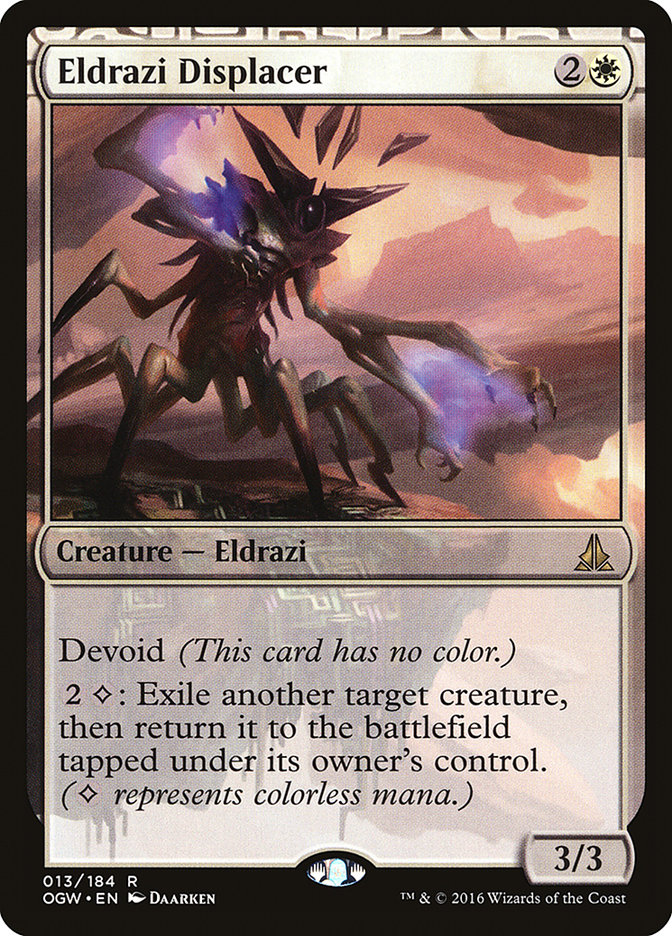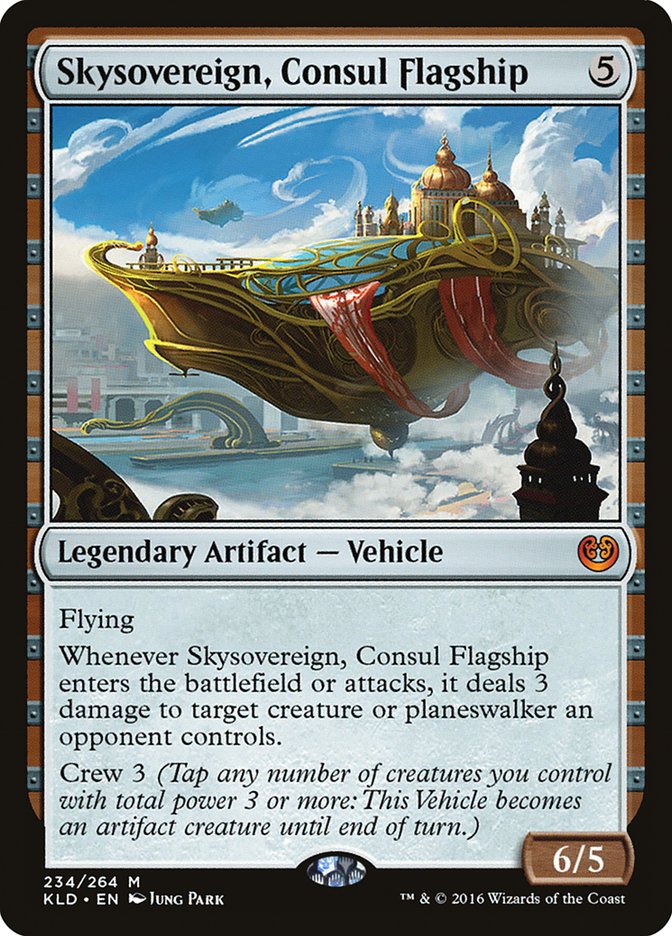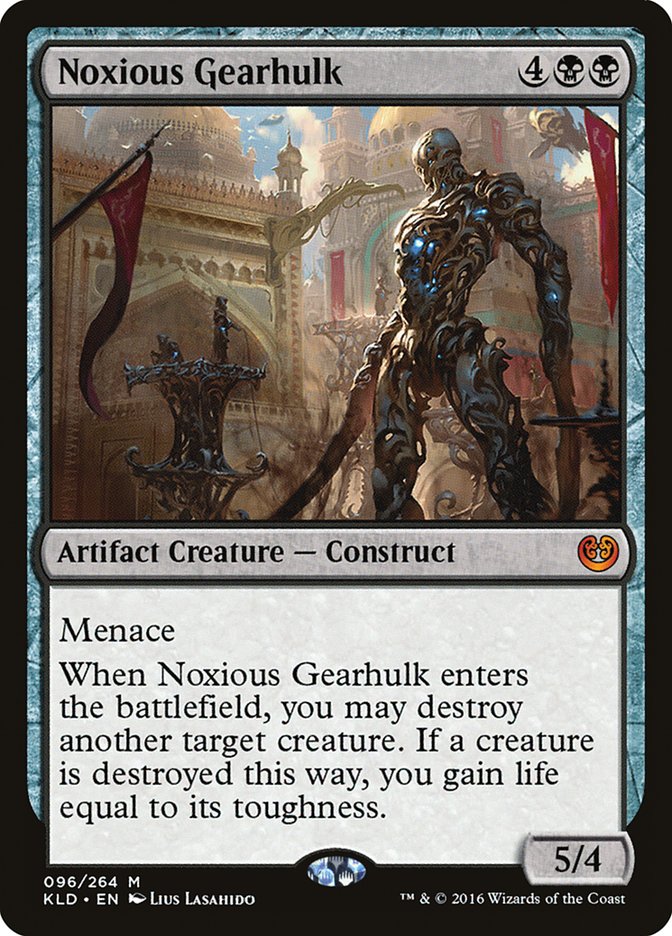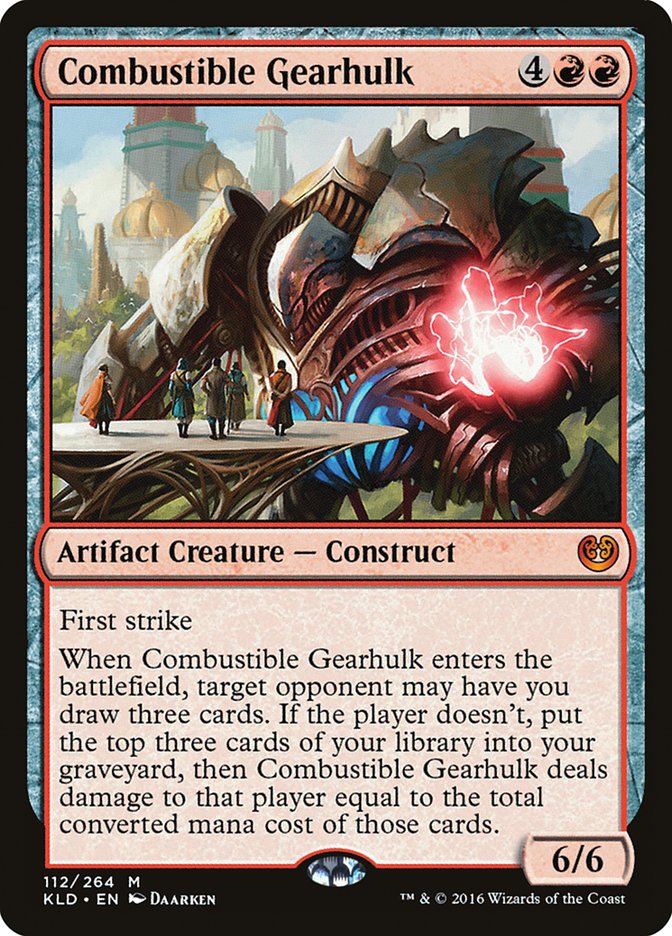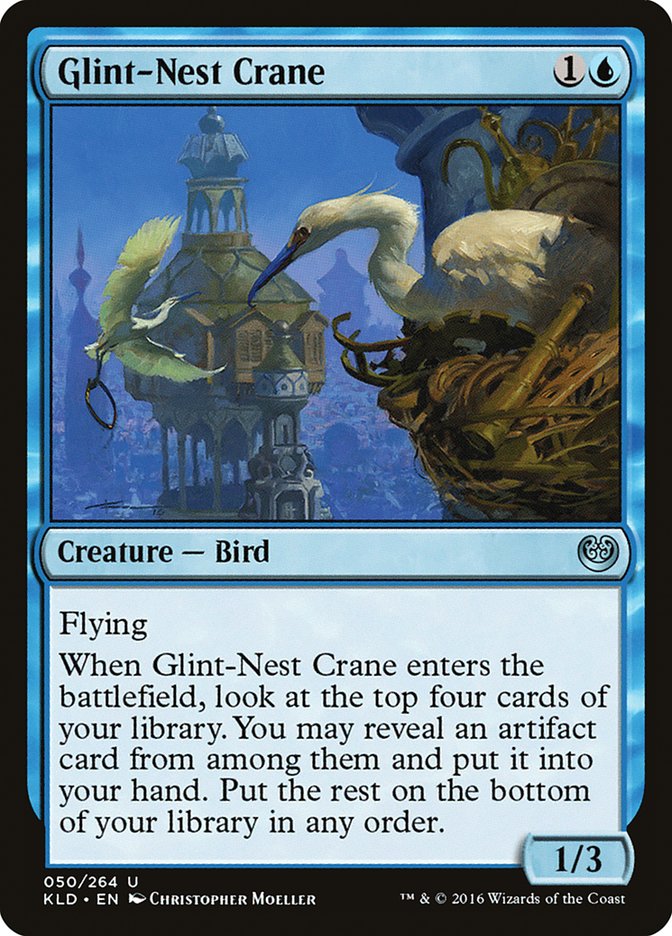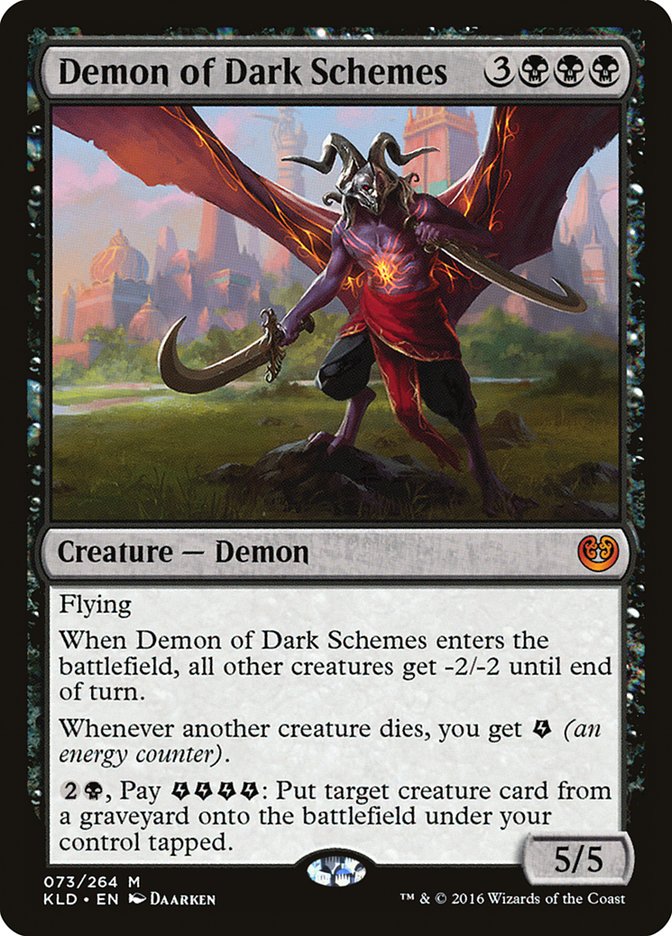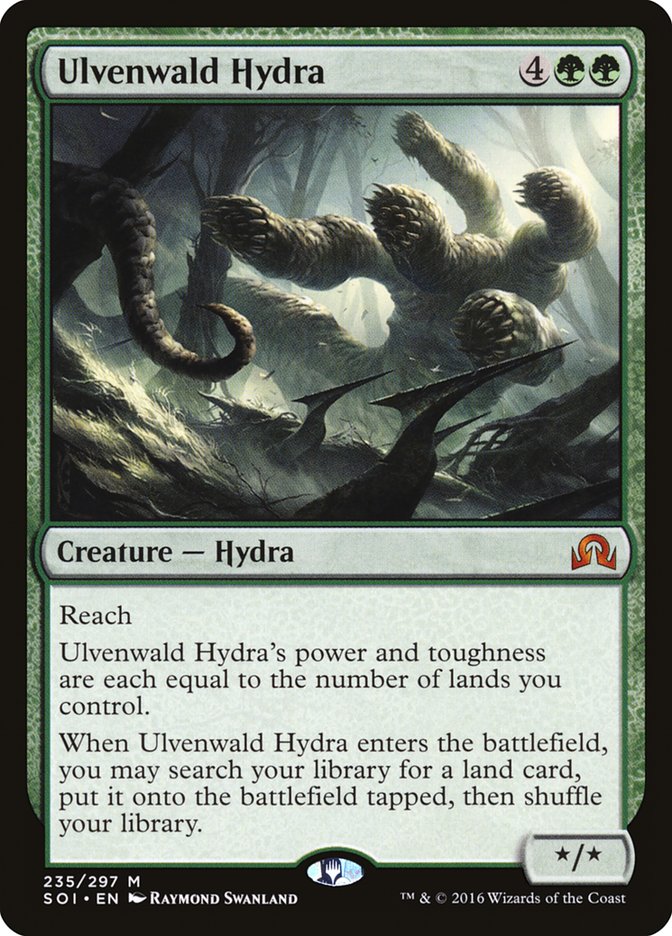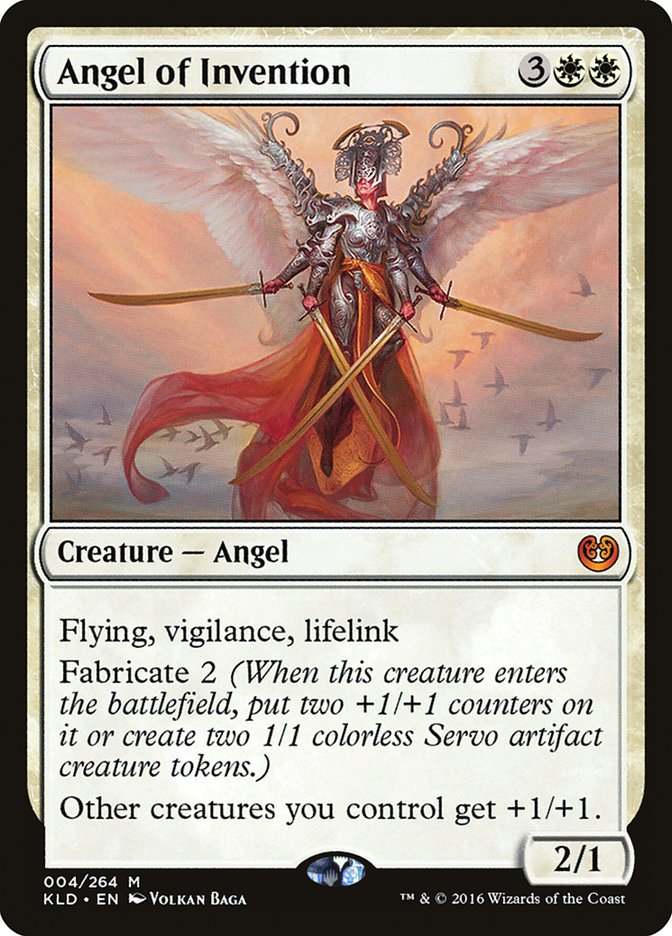I have the greatest of respect for Seth Manfield. I said last week that I admired his efforts to make Standard less of a two-and-a-half deck format, and I still do. Panharmonicon is one of the most fun cards available to us in Standard, and the fact that it can be built into a top-level deck makes me all kinds of happy.
With that said, and as good as Seth is, he didn’t go far enough. Two colors? Really, Seth? You stuck with a measly two colors? For shame! While at GP Milwaukee I was fortunate enough to see Robert Kohn (of TK Games in Menomonee Falls, WI) playing not three, not four, but five colors in his Panharmonicon brew. I was instantly in love and asked for the list, which he was happy to provide:
Creatures (24)
- 1 Pilgrim's Eye
- 1 Greenwarden of Murasa
- 3 Reflector Mage
- 1 Verdurous Gearhulk
- 4 Filigree Familiar
- 1 Cataclysmic Gearhulk
- 1 Arborback Stomper
- 2 Noxious Gearhulk
- 1 Cloudblazer
- 1 Combustible Gearhulk
- 4 Glint-Nest Crane
- 4 Servant of the Conduit
Lands (24)
Spells (12)

Wow. Just…so beautiful. There is so much value here, and so much greed. Just reading the list made me tingle, so I knew I had to throw it together. Let me tell you, I had a blast playing it despite some lousy variance twists. Before we get there, let’s look at the list as a whole.
The first thing I noticed was that the deck was a little heavy on the win-more side. Eerie Interlude is a really good card when you already have a developed battlefield or a couple of creatures and a Panharmonicon, but otherwise it is a dead card.
Robert, who built the deck to have in the store so that customers would have someone to play Standard against, called out Eerie Interlude as one of his favorite things to do with the deck. I do not doubt that for one second, and I can imagine some of the epic blowouts the card has caused. I want something a little more consistent here, though.
The more I see Cataclysmic Gearhulk and its trigger, the less I like it. I do think this deck needs a catch-up card and one that can be searched up, but although Panharmonicon does double the enters-the-battlefield trigger, it won’t actually do anything. We also don’t get to choose what our opponent keeps, unlike with our dearly departed Tragic Arrogance.
What really drew me to this list was Bring to Light. Another card that was forgotten with the loss of the incredibly consistent manabases from the Khans of Tarkir/Battle for Zendikar Standard environment, an almost universal tutor in this deck is something in which I am definitely interested. In Robert’s deck it can find us the Cataclysmic Gearhulk to save our lives, the Verdurous Gearhulk to apply pressure, the Arborback Stomper to stabilize our life total, or Cloudblazer to get all the value ever. Bring to Light is at its best in a toolbox deck anyway, and that’s definitely what we are trying to do.
The manabase, while a little slow, looks capable of doing what we need to do: cast our spells. On first glance, I didn’t understand why we had no Wild Wanderer in the deck, but between Pilgrim’s Eye and Evolving Wilds, we don’t really need it. Having creature-lands also gives us some resilience to sweepers, including our own. Servant of the Conduit also looks set to do some heavy lifting, both in terms of ramp and fixing.
In talking about the deck and how it plays, Robert called out the ability for it to adapt based on both its opening few draws and the opponent. Aside from Bring to Light, we can also tailor our draws somewhat with Glint-Nest Crane. Although the deck skews more to survival until we find a big bomb, the ability to get aggressive is there. This is not a fast deck, but it shifts gears from setup to domination in a hurry.
Ringing in the Changes
Although I could see some changes I wanted to make, I was tempted enough to take the list to FNM. I did tweak the list a bit based on my own style and the observations above:
Creatures (24)
- 1 Pilgrim's Eye
- 1 Greenwarden of Murasa
- 2 Reflector Mage
- 1 Eldrazi Displacer
- 1 Verdurous Gearhulk
- 4 Filigree Familiar
- 1 Multiform Wonder
- 1 Arborback Stomper
- 2 Noxious Gearhulk
- 1 Cloudblazer
- 1 Combustible Gearhulk
- 4 Glint-Nest Crane
- 4 Servant of the Conduit
Lands (24)
Spells (12)

One thing I found when goldfishing the deck was that Glint-Nest Crane was missing a little too often for my tastes. Could that be in part to my inability to realise that “f-o-u-r” does not spell “three?” Perhaps. It might also be that we needed to squeeze in some additional artifacts. As one of my cuts was an artifact (Cataclysmic Gearhulk) and the obvious replacement was Fumigate, I was going to be down another artifact. Fumigate to me is just a better rescue button that the Gearhulk, especially because it leaves no problems to solve. We can still fetch it up with Bring to Light, and the lifegain might be relevant if we need to wipe the battlefield.
In addition to the above-mentioned cutting of Eerie Interlude (which almost physically hurt me), I decided to shave a Reflector Mage. Most of the creatures in Standard right now have enters-the-battlefield or on-cast effects, making them monumentally bad to put back in an opponent’s hand. We’re not playing a deck that can capitalize on that one-turn window in most cases, though bouncing a Spell Queller or Fairgrounds Warden could make a major difference. The card is good enough to warrant a slot or two, I think, but three was too many. In their place I added Eldrazi Displacer, Multiform Wonder, and Skysovereign, Consul Flagship.
Eldrazi Displacer just seemed like a natural inclusion in the deck. Although we are a little short on colorless sources (six in the deck), we don’t need many to make the card a worthy inclusion. Blinking Glint-Nest Crane can help us find Panharmonicon, and once we have it, we shouldn’t need to blink our big hitters too often to just outright win the game.
Skysovereign fills a couple of roles. It has evasion and can be crewed up by most creatures in the deck, plus it is an artifact to hit with Glint-Nest Crane. Sadly, we cannot cast it with Bring to Light, but we can’t have everything. Giving us a maindeck way to deal with planeswalkers is also valuable, as they are a major blind spot for us in this deck as it is configured.
Multiform Wonder is a bit of a gamble, but having played with it a fair bit in Limited, I think it can make the jump to Standard. It is friends with Panharmonicon, it can be searched out by both the Crane and Bring to Light, it has evasion if we want it to, and it can hit hard. It’s also a good candidate for Verdurous Gearhulk counters. I didn’t draw it at all while playing FNM, but I am going to leave it in for further testing. I see potential here.
The sideboard was where I made the most tweaks. As a Bring to Light deck, we have the luxury of taking a toolbox approach to the sideboard, which is mostly what I am going for here. We can bring in an additional Bring to Light to help us find some of the spells we bring in, and there are often matchups where we want to cut some of our maindeck toolbox options to make room. We have answers for most of the popular archetypes here, though I will once again lament the lack of an Indrik Stomphowler in Standard. Robert’s sideboard was a little more focused on a couple of decks, but I am very down on Radiant Flames right now (especially given the inability to do anything with it after a Spell Queller or off Bring to Light), and the counterspell package was not really enough to make me want them over just dealing with the permanents.
In playing the deck I quickly saw why Robert was so effusive about the fun level of the deck. This thing is a blast to play. Casting, for example, Noxious Gearhulk with a Panharmonicon on the battlefield is just ridiculous. Untapping and casting Eldrazi Displacer, and then blinking the Gearhulk? Even more ridiculous. I also drew six cards from Combustible Gearhulk when my hand was empty, which is about the greatest feeling ever. I had some issues with variance on the night, but overall the deck felt powerful and my concerns over the mana were unfounded. Bring to Light, on the occasions I was able to find it, was amazing. It needs practice and familiarity with the deck and its lines, but the power level is definitely there.
Potential Additions
The great thing about the way this deck is set up is that there are almost limitless options for additions to the deck. Although for the most part we want to keep our choices searchable with Bring to Light and/or fetchable with Glint-Nest Crane, there are some cards that are just so good that we want to consider them.
Like Demon of Dark Schemes, for example. I seriously considered this card, but the inability to tutor up our sweeper at will is what kept me away from it. The enters-the-battlefield effect is pretty powerful on its own, but adding a Panharmonicon makes it basically a Wrath effect with a 5/5 attached. Oh, excuse me, a 5/5 with upside. Recycling everything we kill would be great, even if we didn’t double any enters-the-battlefield effects they may have. The triple black mana and the six converted mana cost made me balk at the inclusion for now, but maybe a tweak of the manabase could help us.
Ulvenwald Hydra is in a similar situation. The upside is significantly less, but it is far easier to cast and can provide both a solid blocker and some fixing. The card has seen very little play outside of some cameos in a couple of ramp decks last season, but is of a high enough power level to intrigue me, more so than Woodland Wanderer, for example, which I initially had here. Sure, we can cast that off Bring to Light…but we really don’t want to.
Angel of Invention, on the other hand, ticks almost all of our boxes. It has evasion, gives us some lifegain, provides a nice Anthem effect for our Servants and Cranes, and make a powerful army to follow a Fumigate. Panharmonicon allows us to both make the Servos and make the Angel big, or simply make the Angel huge. And of course the Angel’s tutorable. The only reason I have not included it is that I’m not sure what to cut.
Eldrazi Skyspawner might seem like an unexciting addition compared with the rest of our options, but it has some extra utility that make it a great choice. The Scion can be relevant to ramp us from three to five, and a 2/1 flying body is not insignificant. We can also use the mana from the Scions to activate Eldrazi Displacer, which can’t be a bad thing, right?
One other thing that additional colorless mana would enable is Thought-Knot Seer. One of the most powerful cards to combine with Panharmonicon, it was kept out of the list for color considerations. As we can tutor it up with Bring to Light, that is not a deal-breaker, but adding more Scion generation (aside from the Eyeless Watcher in the sideboard, which I added to win grindy games with a combo finish) could tip the scale in favor of the freaky-looking eyeball.
Light It Up
Although Panharmonicon was the focus of Robert’s deck, it was Bring to Light that really attracted and impressed me.
Okay, Panharmonicon attracted me, and impressed me. But Bring to Light did too.
Prophetic Prism is a heck of a Magic card, and I genuinely think it alone could be enough to make Bring to Light a viable strategy. The question is what to put around it. Do we want to go with mainly spells, finding the right one at the right time to save the day? Do we want to try to recur it as much as possible to keep our utility high?
The best bases appear to be either Bant or Sultai, as they give us the most options for removal and hard-hitting game winners. Ideally I would want to go heavy on spells and removal, keeping the creatures on the utility side. I will work on that list over the holidays and see what I can put together, but my mind is primed for the challenge.
Well, folks, that’s all we have this week. As always, thanks for stopping by. I hope you all have a great holiday season and that you will join me again in the New Year as we attack 2017 the way we left 2016: with all the fun we can muster. Until next time…Brew On!


